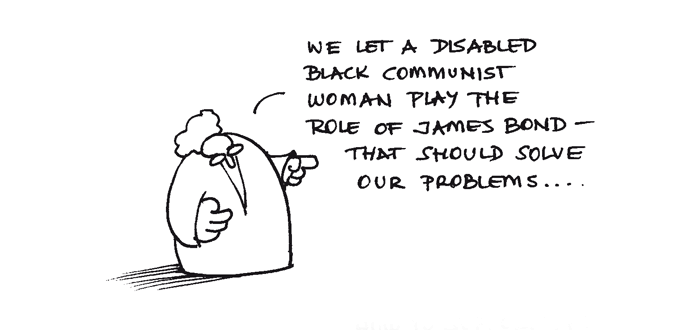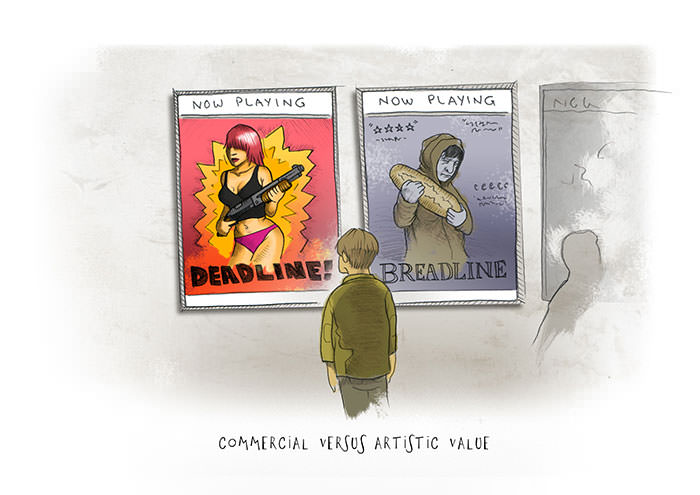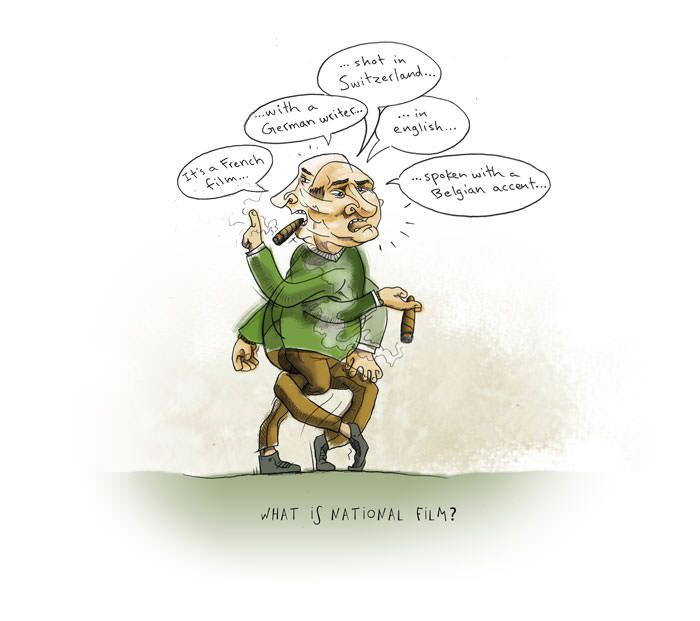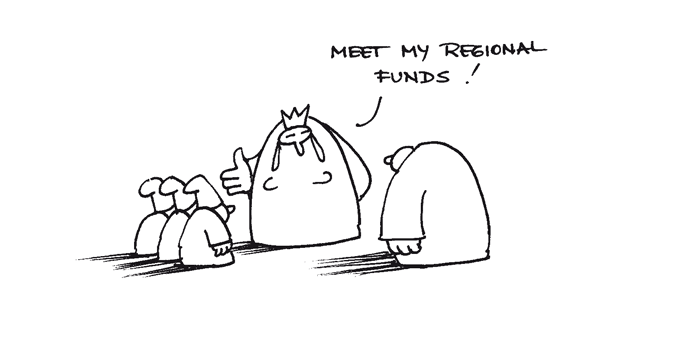The 12 Labours of Hercules Report of the Reports – Workshops 1 to 4
The first cycle of MEDICI (2012–2014), with its four Workshops, was conceived in real time and progressively adapted in order to cover the main challenges faced by the funds, starting with “Strategies & initiatives for the film funders” (1st Workshop), followed by “Financing Strategies” (2nd Workshop) and “Impact of digital in the film business and production decision making processes” (3rd Workshop), ending with “Promotion, distribution and success evaluation (4th Workshop).
55 participants in the four Workshops represented 35 national, regional and supranational funds.
Given the different cultural, economic and political background and environment of each fund, it is impossible to come up with conclusions or solutions that would completely satisfy all of them.
Nevertheless, this "Report of the Reports" brings together ideas, proposals and actions discussed by the funds around the twelve major challenges they are facing.
A. The Twelve Challenges Faced by the Funds
Actions, proposals and ideas to respond to these challenges are detailed in chapter B.
- Reach the audience
- Consolidate a diversity of projects
- Enhance the projects' quality
- Face budget cuts
- Seize the opportunities offered by the new platforms and piracy
- Support co-productions
- Deal with the complexity of the financing landscape
- Develop new talents
- Collect data
- Enhance the sustainability of the industry
- Be innovative and to take risks by being pro-active (leader)
- Develop a leadership attitude vis-à-vis governing bodies
B. Actions, Proposals, Ideas Regarding the Twelve Funds’ Challenges
1. Reach the Audience
W1/M3 – W2/M1, M3 – W3/M1, M2, Conclusions – W4/M1, M2, M4, M5
Role of the funds
- To develop actions encouraging young audiences to go and see films through innovative marketing options (apps, mobile devices, social networks etc.)
- To support systematic school screenings
- To encourage producers and directors to team up with their distributors to develop audience design at the early production stage by offering financial support
- To collaborate with social media, airlines, cable companies, etc. to increase the opportunities for the films to be seen
- To be more proactive in communication with both national and regional distributors and set regional rather than only national goals (i.e. Nordic Film & TV Fund new distribution programs)

- To change their way of selecting projects by:
- Considering how the producer defines the audience and plans to reach the market for his/her project
- Being more open for release on VOD platforms
- Being more selective in terms of diversity of projects and talents
- To invest more in distribution of supported films
- To extend the existing multilateral treaties to distribution funding schemes in order to open up to neighboring countries
- To better grant the distributors, on the condition that they ensure a corridor (10 to 15%) to the producer, in addition to the normal share
- To stimulate new release strategies by:
- Facilitating talks within the industry, initiating processes and inspiring people to think creatively
- Launching innovative distribution schemes
- Reducing automatic support schemes and hiring experts with diversified expertise to implement alternative release strategies
- Take the responsibility, in accordance with the distributor and the producer, to decide if a film merits a theatrical release or not; and be ready to accept other release windows
- Helping festival hits get their instant post-festival VOD releases for international audiences
- To create bridges between the television and film industry
- To think more about demand than supply
- To measure the results of their decisions and draft indicators to carry out their evaluation (see “Success indicators under challenge 9.)
- To help art-house theaters, through digitization, to keep films longer on their screens, to reach a wider audience, enabling more films to be seen
- To take into consideration participatory cinema (crowd-financing, social-network financing, and engagement of the on-line community of film enthusiasts)
Role of the producers
- Producers should act as distributors for:
- Niche films to bring them to the audience via crossmedia opportunities for a one-time fee and without selling rights
- Digital distribution
Role of distributors
- To explore new options besides theatrical releases and distribution of blockbusters
- To access distribution support, funds could require distribution companies to deliver a detailed business plan wherein they do not rely solely on public subsidies

2. Consolidate a Diversity of Projects
Selection of projects W3/M6 – W4/M3
- To adapt / create selection criteria to take into account:
- Projects’ financial, cultural and industrial elements
- The cost of a film and its commercial possibilities
- The social impact of projects that contribute to discussions and defy national borders
- Diversity and quality projects
- To encourage projects able to convey local stories using a universal language
- To measure the concrete results of fund decisions when films have been released

Gender equality & diversity of voices W2/M5
- To improve gender equality and diversity of voices in film production:
- By developing a strategy:
- collecting statistics and measurements (like checking out the situation and the schemes implemented in other countries)
- establishing a flexible agenda
- establishing a long term timeline with simple goals together with budget raising strategy
- By identifying what it is that influences decision-making. Does it take someone who is really great, or someone about whom decision-makers have preconception that men are more talented and competent as filmmakers than women
- By avoiding strictly political decisions and supporting films meant only to satisfy the funds. This can impair objectivity – especially the introduction of quotas
- By paying attention to the content, and to how female characters are portrayed (using, for instance, the Bechtel test).
- By developing a strategy:

New formats W1/M5
- As a priority intervention, if any, to support the development stage (longer and more expensive) of projects that are advanced in terms of team, audience design, platforms releases, etc.
3. Enhance the Projects' Quality
Quality1 W1/M3
- To create a culture of development and allocate sufficient amount (i.e. 20 to 25%) and time to the development of a project
- To propose script-doctoring
- To offer training sessions: Funds can identify weaknesses; they can design and/or initiate training modules and invite experts, often from abroad.

1 Quality includes: Artistic quality: script (social relevance, aesthetics, innovation, magic), synopsis, director’s statement, treatment, visual material, previous work of the director
Production quality: technical and artistic collaboration/coherence, distribution potential, financing element
Back to Index | → 4. Face budget cuts
4. Face Budget Cuts
- When facing budget cuts, funds are obliged to review their objectives and the way they support films. Different options are proposed:
- By maintaining quality but finding other ways to evaluate the projects
- By supporting low budget projects i.e. the likes of simple stories that can travel
- By keeping financial support per film as before (consequently financing fewer films) to fulfill the audience's quality expectations
- By supporting fewer projects but keeping the same number of co-productions, being cautious about a potential shift of majority co-productions into minority ones
- By providing professionals with international high quality expertise to help them keep up with international connections and markets
- By taking into consideration participatory cinema (crowd-financing, social-network financing, and engagement of the online film fans community, etc.
- By thinking of ways to decrease the share of public film funds in the financing of films
- By thinking more digital in order to reduce the costs of filmmaking

Back to Index | → 5. Seize the opportunities offered by the new platforms and piracy
5. Seize the Opportunities Offered by the New Platforms and Piracy
Where in the value chain W4/M3
- To re-think the notion of the evaluation criteria in the context of new media by incorporating three types of criteria – economic, industrial and cultural
- To introduce separate schemes for funding art-house VOD platforms that would offer alternative content to big players
- To find a way to help producers and other key players to better understand what VOD means
- To find a way to develop the taste for platforms devoted to national and European content and to have them – like Netflix – invest in production.
- Distributors with a track record and with big and interesting catalogues could be empowered to make better deals with powerful global platforms

New business models W3/M3 & Conclusions
- Are necessary so that funds can deal with new parameters such as data, price points, connection speed, demographics, user behavior, how good people are with technology, new ways of reaching the market, etc.
- Can set up new distribution windows that would better satisfy audience demand and turn them away from piracy.
- By experimenting with new models funds bring the audience and the producers together, providing more new distribution opportunities
- New business models should imply the introduction of levies on Telecoms, ITunes, etc. and require funds to make adjustments to have someone else take control on how national films must communicate with their audience

Piracy W4/M1
- To provide people with a legal offer that matches the piracy offer
- To lower the price of products
- To try to benefit from something that is made available for free. Piracy can help incite popularity
- To obtain data on illegal downloading. It can speak volumes about people’s habits, general tastes and demand
- To add editorial content for free on VOD’s platforms

6. Support Co-Productions
- To find a right balance between the support of majority (and national) and minority co-productions
- Reciprocity but not at the expense of the quality of the project or as an obligation for funding
- Allocate a % of the funds’ budget or increase the funds for the minority co-production schemes in order to attract new names, improve skills and consequently improve the performance of domestic cinema
- Acknowledge co-productions where a co-producer has at least a contract with a VOD distributor, especially when it comes to the countries of minority co-producers.
- Clarify guideline rules regarding MGs, overheads, expenditures requirement producer’s fee, equity finance, deferments, etc.)
- Facilitate the procedures (like: working on a common production budget and decrease paperwork)
- Offer training sessions and seminars to improve producers’ knowledge

Back to Index | → 7. Deal with the complexity of the financing landscape
7. Deal with the Complexity of the Financing Landscape

Combination of public funds W2/M4
- Each fund must define goals clearly to avoid cultural and linguistic misunderstanding
- Networking between funds to gain more harmony and collaboration (Cineregio, EFAD, MEDICI…)
- To find ways to make fund investment more efficient and avoid political obstacles
- Elaborate a single shared contract per project
- By opting for more inclusive tax-mechanisms that avoid the trap of promoting only the local element (Belgian tax-shelter excels as the best example)
- To marry cultural and economic interest in a competitive environment where the competition between countries with the risk of having economic factors replace cultural ambitions

Private investors support W2/M3
- Convince private investors that their investment has more social and environmental impact than financial profit
- Public funds should be the first to invest in films, taking on the risk and proving to private investors that such a risk is worth taking
- Recoupment on the part of the public funds should not be an obstacle to private investment
- Public and private money should join forces but private investors should in no case seek to take over the producer's role
Market money W1/M2
- To find the right balance between the market and public money. Funds should stimulate the market and target the audience
Business standards & practices W2/M3
- To define sustainable business standards
- To work on developing and sheltering a recoupment system that gives back money to producers
- To foster good and shared practices in production, encouraging the exchange of working methods, in particular within co-productions
- To provide professionals with better filmmaking conditions
Back to Index | → 8. Develop new talents
8. Develop New Talents
- Funds are responsible for tracking new talents and should take the responsibility to finance them
- To introduce new financing schemes for new talents (first time director, first time producers, small/low budget films)
- To allocate % of budget to newcomers (25%?)
- For micro-budget film take off the pressure of theatrical release
- To pay specific attention to 2nd films

Back to Index | → 9. Collect data
9. Collect Data
- To collect data in order to better understand how the market evolves, more specifically, data on:
- cinema and non cinema audience
- illegal downloading
- audience demand
- film success (box office, international visibility, sales, etc.)
- demography for locating audience
- include the expertise of data analysis within their organization to adapt or create their funding schemes

Back to Index | → 10. Enhance the sustainability of the industry
10. Enhance the Sustainability of the Industry
Have clear objectives & Strategies W2/M4
- To give producers a precise road map, including the objectives and expectations set forth by the ministries and politicians

Sustainability of production companies W1/M3 – W2/M3, M4
- To find the right balance in the support of small companies and bigger ones, of project per project and slate of projects at national and international level
- To offer:
- Slate funding at the screenwriting and development stage
- Financial support to minority co-productions
- To clearly separate smaller automatic schemes or industry-driven schemes from selective schemes
- To encourage producers with partners, with companies involving several people
- To foster good and shared practices in production encouraging the exchange of good methods
- To re-think the recoupment structures

Dialogue & Involvement W1/M2 – W4/M4
- To keep ongoing communication between funds and various industry players
- To redefine together the time and space of the exploitation of our films, adjusting them to the local environment. Funds could gather all industry players in the same discussion room. Funds can give them clear affirmative signals and support their projects and ideas
- To convince producers to produce different genres of films
- To have industry representatives on board and selection committees in equal proportion

Transparency and democratic processes W1/M2 – W3/M8
- To remain democratic and avoid any external pressure on decision-making
- To encourage professionals to work together, in particular within co-productions
- Any decision to support a project, negative or positive, should be explained to increase producers' awareness and responsibility instead of “scaring them off’”
- By asking the producer to fight for the film they consider to be the best, to link up with persons who are ambitious, knowledgeable and skilled (in connection with scripts, working with talents through to the film's distribution), enabling the fund to define and communicate to politicians and government just WHY it wants to support the film, even though a considerable financial risk is entailed

Training/Education W2/M2 – W3/M4 Conclusions – W4/M3
- To support and intervene in the education, training programs or seminars for producers and other creative people about:
- Distribution, promotion and market evaluation. Presently, students are unable to recognize new possibilities for targeting and reaching the audience
- Co-production: producers, even experienced, are often unfamiliar with co-production procedures and negotiation
- VOD platforms/market: give tools to help producers and other key players to better understand what VOD means, in order to make their films attractive and more easily available on such platforms
Back to Index | → 11. Be innovative and to take risks by being pro-active (leader)
11. Be Innovative and Take Risks by Being Pro-Active (Leader)

Fund as a player W2/M1 – W3/M??? – W4/M5
- To lobby for changing the law in order to include different release windows in their support schemes
- To evaluate whether the role of the funds is limited to looking for national effects and sticking to rigid national film policies, or to consider European transnational cinemas and audiences
- To take advantage of their public influence to introduce innovative financing, new business models and support new distribution strategies
- To improve collaboration with other funds by knowing and understanding each other better, particularly with those ones based in the same region/country.
- To answer for themselves and their supporting governments whether:
- trans- and new media projects are of cultural value
- is there a need for a new kind of funding body or can it be funded within existing structure
- To opt for new financing strategies like crowdfunding and social network financing
- To determine whether to remain exclusively a cultural fund or, due to the economic crisis, to invest more in TV programs and commercial projects
- To overcome two main barriers:
- EU regulations stipulating that film funds cannot interfere with the market.
- Pressure exerted by the big theater owners to see the heads of film institutes fired
- To be open minded enough to be seduced by something unexpected
- Having a macro-perspective, funds must think entrepreneurially and be more community-driven

Success Indicators W3/M6 – W4/M6, Telefilm Canada Success Index (PDF)
- Success evaluation is the key for film fund managers. It is a matter of accountability not only with regard to the politicians and other instances, but also as to their own management and decision process.
- Such an index should:
- Show what has been achieved as a fund far better than any other figures.
- Push production companies forward
- Include more than merely economic value, but also the cultural aspects of projects.
- Be applicable in countries with sufficient production companies and funded projects
- Not be automatic in order to include other considerations

Back to Index | → 12. Develop a leadership attitude vis-à-vis governing bodies
12. Develop a Leadership Attitude Vis-à-vis their Governing Bodies
Political & Industry levels W2/M1 – W3/M1, M2, M4 – W4/M2, M5
- As publicly-funded bodies, film funds depend on the demands of politicians and legislation. National laws, European Communication and other acts strictly regulate the funding policies of national film funds. It takes two years for a public fund to make a change within a support scheme
- It is urgent to find a way to respond faster and act more radically. The case of the Nordisk Film and TV Fund (NFTVF) can set a good example
- Funds are an interface between the government and the professionals. They should have ambitions in order to deserve the professionals’ trust
- Funds can facilitate talks within the industry, initiating processes and inspiring people to think creatively

International W2/M1 – W4/M2 – W4/M5
- By being more global, i.e. opening up to new non-European markets regarding co-productions
- Extend the existing multilateral treaties to distribution funding schemes in order to open up borders and define collaboration with neighboring countries
- Inspire a regional (and also international) collaboration in the context of driving the industry towards new platforms
- To consider European Transnational cinema and audiences
